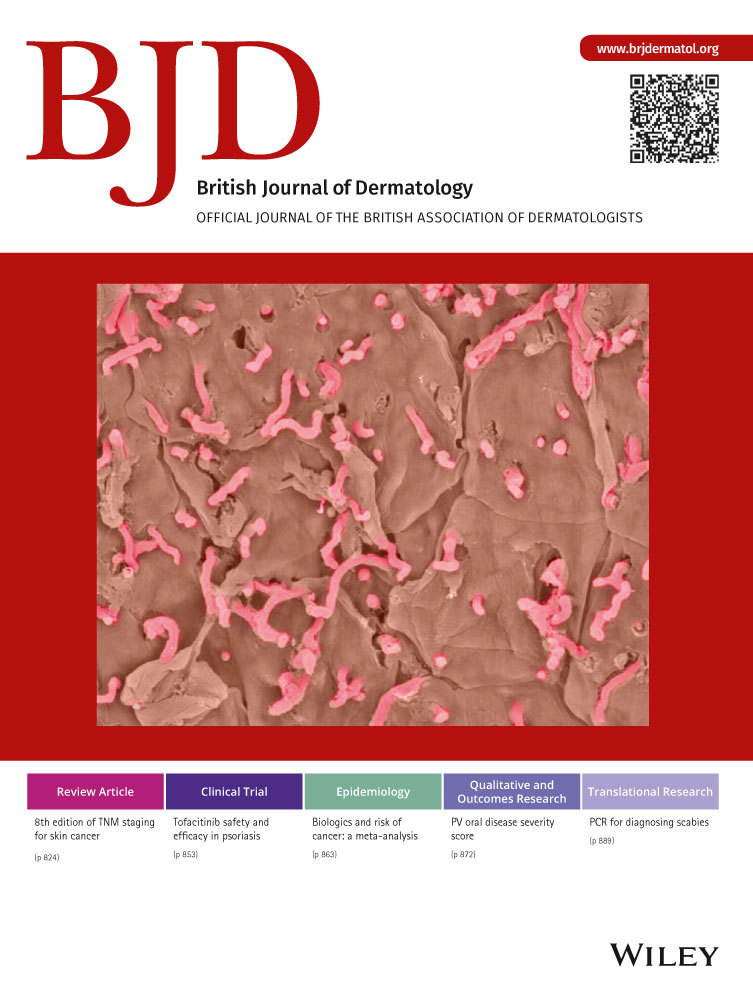Cumulative exposure to biological therapy and risk of cancer in patients with psoriasis: a meta-analysis of Psonet studies from Israel, Italy, Spain, the U.K. and Republic of Ireland†
Plain language summary available online
Summary
Background
Cancer risk following long-term exposure to systemic immunomodulatory therapies in patients with psoriasis is possible.
Objectives
To assess a dose–response relationship between cumulative length of exposure to biological therapy and risk of cancer.
Methods
Four national studies (a healthcare database from Israel, and prospective cohorts form Italy, Spain and the U.K. and Republic of Ireland) collaborating through Psonet (European Registry of Psoriasis) participated in these nested case–control studies, including nearly 60 000 person-years of observation. ‘Cases’ were patients who developed an incident cancer. Patients with previous cancers and benign or in situ tumours were excluded. Four cancer-free controls were matched to each case on year of birth, sex, geographic area and registration year. Follow-up for controls was censored at the date of cancer diagnosis for the matched case. Conditional logistic regression was performed by each registry. Results were pooled using random-effects meta-analysis.
Results
A total of 728 cases and 2671 controls were identified. After matching, differences between cases and controls were present for the Charlson Comorbidity Index in all three registries, and in the prevalence of previous exposure to psoralen–ultraviolet A and smoking (the British Association of Dermatologists Biologic Interventions Register only). The risk of first cancers was not significantly associated with cumulative exposure to biologics (adjusted odds ratio per year of exposure 1·02, 95% confidence interval 0·92–1·13). Results were similar if squamous and basal cell carcinomas were included in the outcome.
Conclusions
Cumulative length of exposure to biological therapies in patients with psoriasis in real-world clinical practice does not appear to be linked to a higher risk of cancer after several years of use.




